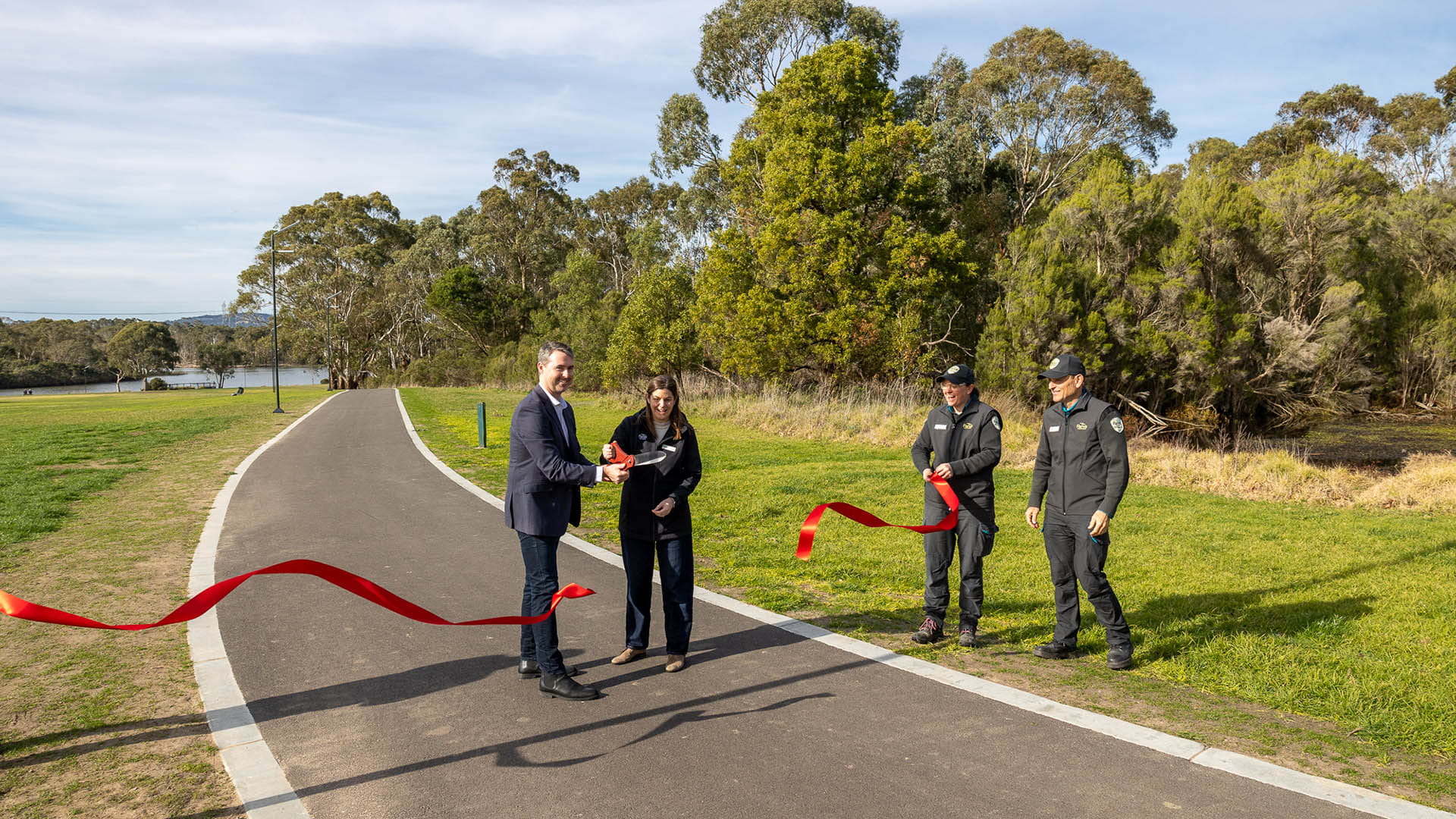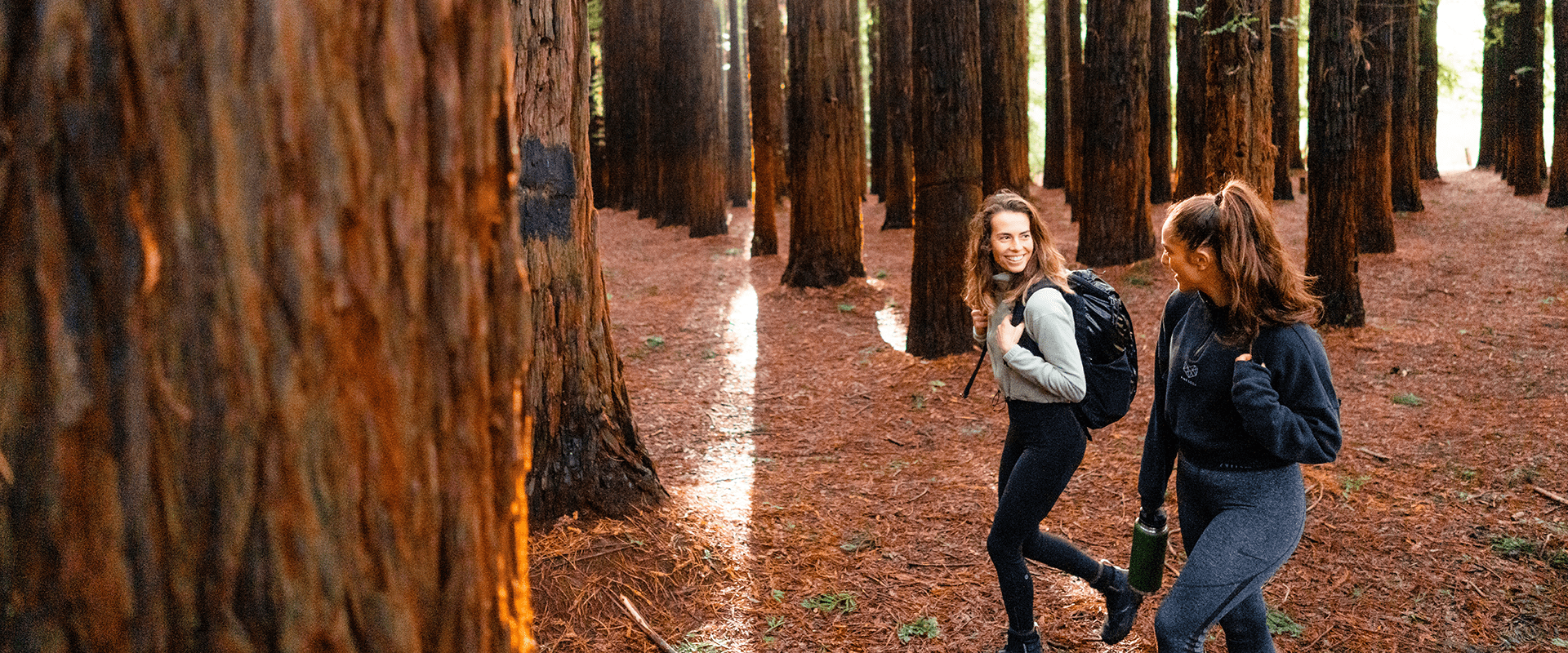Popular Parts of the Grampians (Gariwerd) National Park Reopen to Visitors
Tuesday 18 February, 2025
Many popular locations within the Grampians (Gariwerd) National Park are now re-opened to visitors within the non-fire affected areas, including walking tracks, roads, access tracks and picnic areas.

View from Chautauqua Peak: Visitors return to unaffected areas of the Grampians National Park after intense summer fires were quickly controlled.
Since 16 December 2024, several bushfires that impacted large parts of the Grampians (Gariwerd) National Park are now contained or under control.
In the southern areas of the park near Dunkeld, Mt Abrupt (Mud-Dadjug), Mt Sturgeon (Wurgarri) Piccaninny (Baingugg), Signal Peak walks and Grampians Peaks Trail between Dunkeld and Cassidy Gap Road are open for day walks.
The central Grampians, waterfalls, breathtaking views from lookouts, Wonderland Range (north of the Pinnacle), day walks surrounding Halls Gap and Brambuk the National Park and Cultural Centre are open and safe. These include:
- Boroka Lookout, Reeds Lookout, MacKenzie Falls and Zumsteins Picnic Area
- The Wonderland Area, including The Pinnacle, Venus Baths and Grand Canyon
- Chatauqua Peak, Clematis Falls and Bullaces Glen
- Boronia Peak and Fyans Creek Loop
In the Northern Grampians walks re-opened to visitors include:
The northern section of the spectacular Grampians Peaks Trail is open for day walks from Mount Zero to Halls Gap. Experience the panoramic views and hike along rugged rocky ridgelines.
Mount Zero, Mount Stapylton, Hollow Mountain and Beehive Falls and Mount Difficult (Gar) day walks are also open.
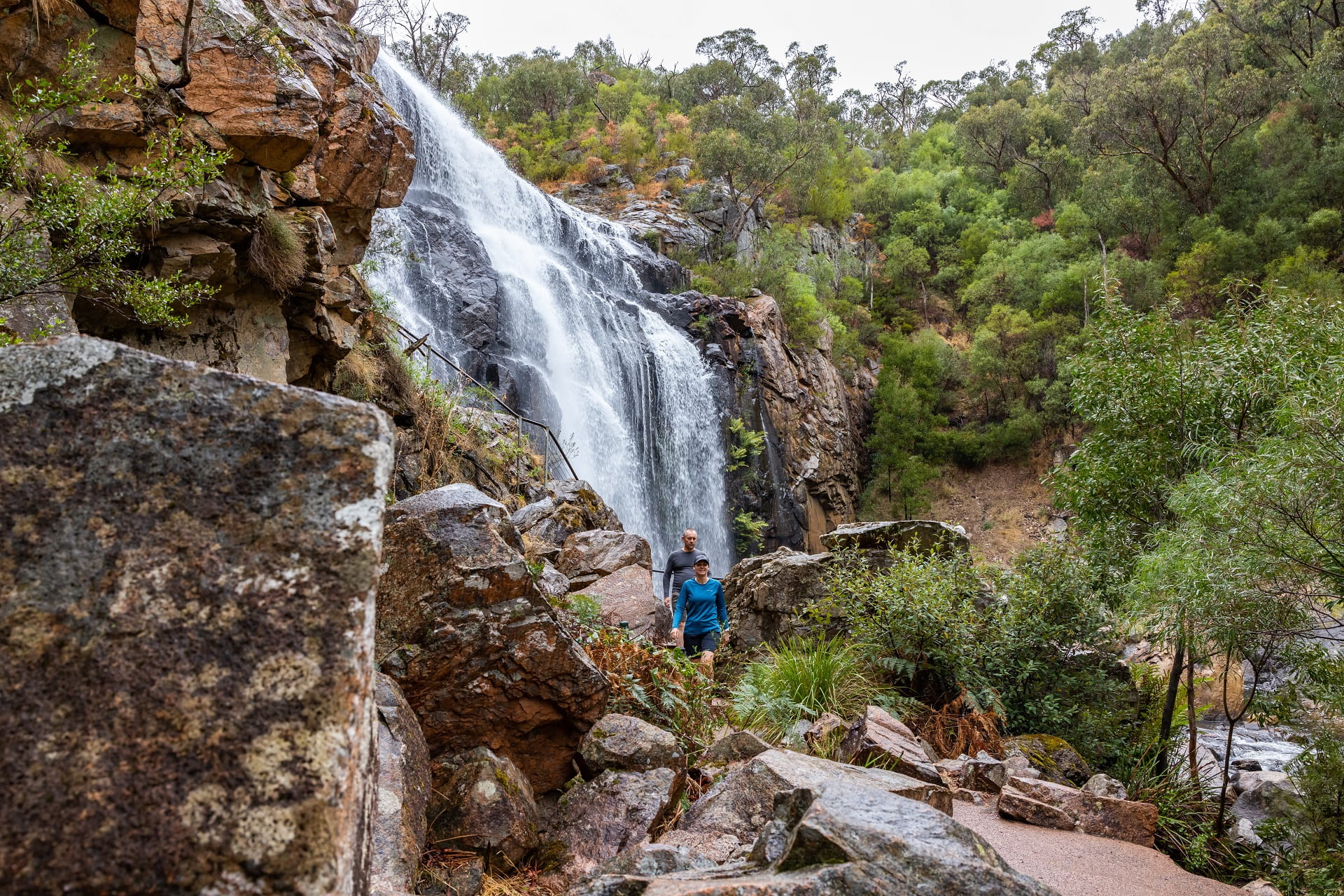
Mackenzie Falls: Popular areas of the Grampians (Gariwerd) National Park are now open to visitors
Full details of reopened areas of the park are available on our website's change of conditions page or call into Brambuk the National Park and Cultural Centre in Halls Gap, where park staff can help you plan your visit.
Critically endangered Brush-tailed Rock-wallabies survive the fires
The critically endangered southern Brush-tailed Rock-wallaby has been spotted on camera for the first time since the fires burned through their habitat in the Grampians (Gariwerd) National Park in December.
Several female wallabies with joeys have been photographed on the remote cameras, including some enjoying the carrots and other food dropped in emergency feeding operations.
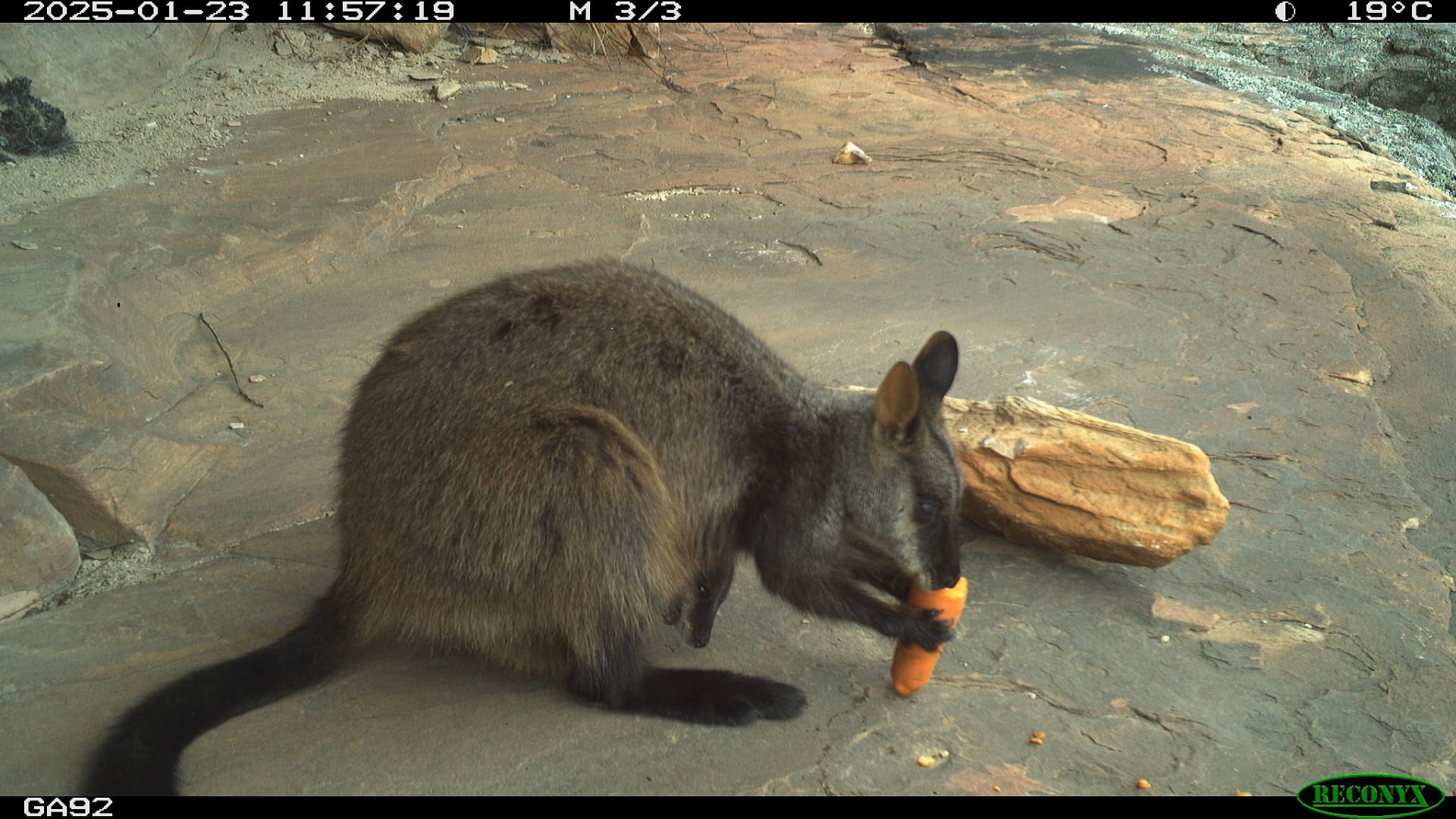
A Brush-tailed Rock-wallaby with a joey in her pouch enjoying carrot air dropped in emergency feeding operations

Fears for the survival of the critically endangered Brush-tailed Rock-wallaby were short-lived
It has been a huge effort from the Parks Victoria Grampians Ark team, supported by firefighting agencies, deploying motion-sensing cameras to replace those burnt in the fires, preparing feed and, trialling the use of a specialised drone to drop the food.
.jpg?rev=1b1be211145d4be9a2325fe383fb4fb8)
The food drop will help the colony survive the aftermath of the fire. Captive-bred brush-tailed rock-wallabies were reintroduced into the Grampians (Gariwerd) National Park during 2008-12. The team is hopeful the entire colony survived.
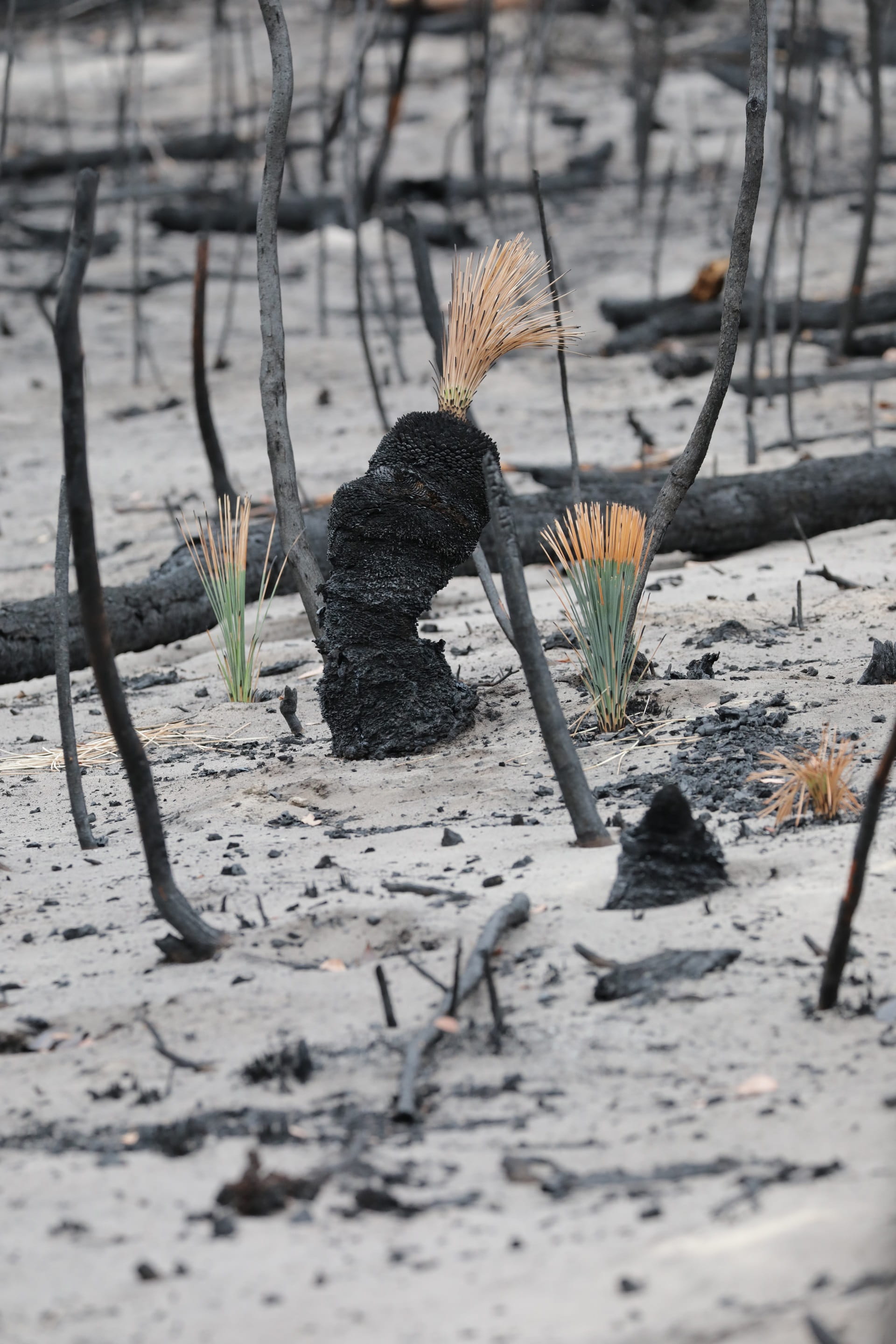
The native flowering grass trees (Xanthorrhoea) are pyrophytic plants – which means they are adapted to survive in fire-prone habitats.
Early scenes in the fireground were sobering, but Mark Norman, Chief Conservation Scientist with Parks Victoria saw signs of recovery. “Fire adapted plants like the Hakea and Banksia have thrown seeds on the ash rich ground so the early signs of recovery are encouraging. In the black summer fires of 2019-20, it burnt the seed down to a meter deep, so I was glad to see burns aren’t uniformly harsh.”
Visitor awareness
Our rangers will be making sure the reopened areas are safe and clean for people to enjoy. They’ll also be putting up signage where needed so people are aware of the areas, tracks and roads that continue to be closed.
For full details on the reopened areas of the park, visit the Parks Victoria website or Brambuk the National Park and Cultural Centre in Halls Gap. You can read more information about summer safety in parks here.
Please don’t try to go into any closed areas, for your safety, and that of the fire crews.
We acknowledge that the fire has affected the Country of the Djab Wurrung, Jadawadajali and Gunditjmara peoples who have occupied, cultivated and shaped the Gariwerd Landscape for thousands of generations. The Nationally Heritage Listed bio-cultural landscape reflects countless generations of skills, knowledge and culture.


